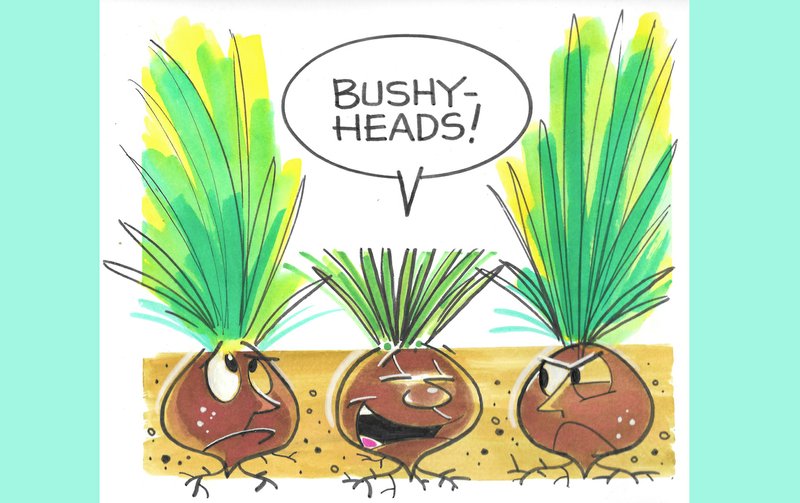Q A different type of spring season for sure, but the jonquil greenery is still so green and yet it has been six to eight weeks since they bloomed? Can we cut the foliage off now? Also, could we dig up the bulbs once the foliage is removed and thin the bulbs now, rather than later? Will digging and replanting now allow them to bloom next spring, or will the bulbs hold off for two years to bloom?
A I cut all the foliage off all my spring bulbs in late May. As much rain as we have had, the foliage is growing in leaps and bounds and was still quite green. As long as your bulbs have had six to eight weeks since flowering, go ahead and cut them back. Within those six to eight weeks of green growth, they have done their job and set flower buds for next spring. They are ready to go dormant until growth time next year. If your bulbs are too crowded and did not bloom well, digging them now and either replanting or waiting until fall for replanting will not alter the size of the flowers next spring. The flowers are set already inside the bulb that's underground. If you know your bulbs are too crowded (or in too much shade), dividing them or transplanting should be done as soon after flowering as possible. At that time, you would want to leave the foliage intact and allow it to die down naturally to allow the bulbs to get re-established and generate enough energy to produce better flowers for the following spring.
Q My dad lives in North Little Rock and has several fruit trees that are about 5 years old and appear healthy. The issue is they do not bear fruit. (With the exception of one pear last year.) This year the peach tree had some blooms, but they have now fallen off. He was told he needed to spray fruit trees at certain times of the year. Do you know what type of spray and when should this be done?
A Standard fruit trees can take five to nine years before they become mature enough to flower and bear fruit. Some fruit trees like peaches and nectarines are considered self-fruitful, meaning they don't need another variety for cross-pollination, but they do need bees to help with pollination. Since he had some flowers on his peach tree, he should have gotten a fruit to form — unless there were no bees, or a late cold snap got the blooms. Apples and most pears do need two different varieties to set fruit, but even self-fruitful trees seem to be more productive if there are other varieties for cross pollination. All fruit trees also need a minimum of six to eight hours of sunlight a day. All fruit trees should be pruned annually to keep them in peak performance. Spray schedules are important once fruit is set to keep the fruits free of insects and diseases. Both pruning and spray guides can be found on the University of Arkansas Cooperative Extension Service website; here is a shortcut link: arkansasonline.com/601fruit.

Q I have seen this in many flower arrangements [the reader sent a picture]. Could you tell me what it is? Thanks.
A I was curious the first time I saw one a few years ago. Believe it or not, it is actually a type of dianthus — related to carnations. It is a variety called "Green Ball" or "Green Trick." It has a long stem and holds up well in a vase.

Q Could you please identify this for me? [The reader sent a picture.] I have always called it a snowball tree. Now I would like to acquire another one, but don't know what to ask for.
A The plant is commonly called a Japanese snowball bush — Viburnum plicatum. There are many species of viburnums with both snowball type flowers (round) as well as smaller clusters and even flat clusters. Some are fragrant and some are not. A great family of plants.
DEAR READERS: I am putting together a group trip Sept. 12-26 to Montreal and Quebec in Canada. We will tour historic gardens, parks and houses, visit a traditional sugar shack in a maple forest, and much more. Read details of the trip here: arkansasonline.com/601tour.
Retired after 38 years with the University of Arkansas Cooperative Extension Service, Janet Carson ranks among Arkansas' best known horticulture experts. Her blog is at arkansasonline.com/planitjanet. Write to her at P.O. Box 2221, Little Rock, AR 72203 or email
jcarson@arkansasonline.com
HomeStyle on 06/01/2019
